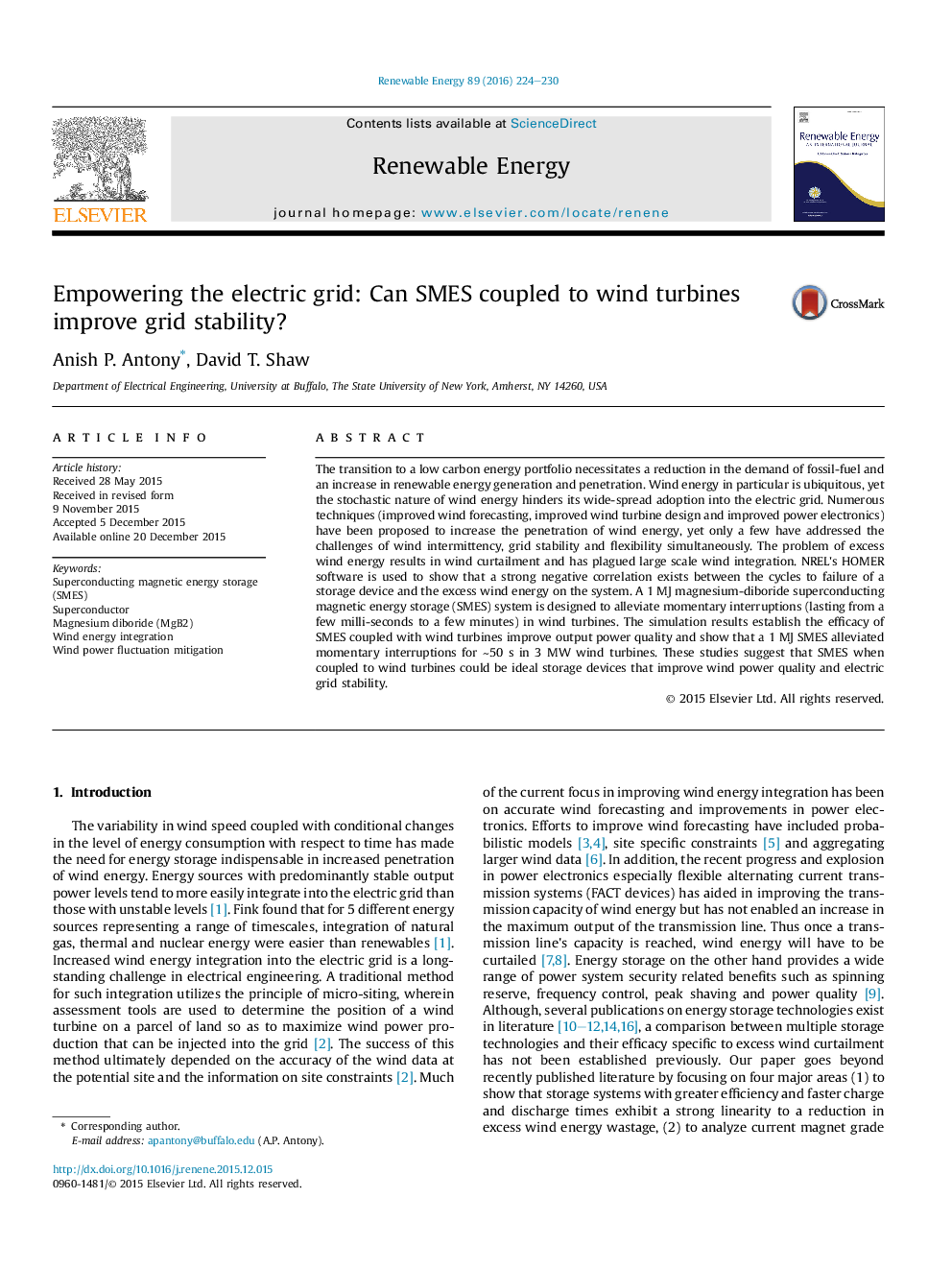| Article ID | Journal | Published Year | Pages | File Type |
|---|---|---|---|---|
| 6766227 | Renewable Energy | 2016 | 7 Pages |
Abstract
The transition to a low carbon energy portfolio necessitates a reduction in the demand of fossil-fuel and an increase in renewable energy generation and penetration. Wind energy in particular is ubiquitous, yet the stochastic nature of wind energy hinders its wide-spread adoption into the electric grid. Numerous techniques (improved wind forecasting, improved wind turbine design and improved power electronics) have been proposed to increase the penetration of wind energy, yet only a few have addressed the challenges of wind intermittency, grid stability and flexibility simultaneously. The problem of excess wind energy results in wind curtailment and has plagued large scale wind integration. NREL's HOMER software is used to show that a strong negative correlation exists between the cycles to failure of a storage device and the excess wind energy on the system. A 1Â MJ magnesium-diboride superconducting magnetic energy storage (SMES) system is designed to alleviate momentary interruptions (lasting from a few milli-seconds to a few minutes) in wind turbines. The simulation results establish the efficacy of SMES coupled with wind turbines improve output power quality and show that a 1Â MJ SMES alleviated momentary interruptions for â¼50Â s in 3Â MW wind turbines. These studies suggest that SMES when coupled to wind turbines could be ideal storage devices that improve wind power quality and electric grid stability.
Related Topics
Physical Sciences and Engineering
Energy
Renewable Energy, Sustainability and the Environment
Authors
Anish P. Antony, David T. Shaw,
